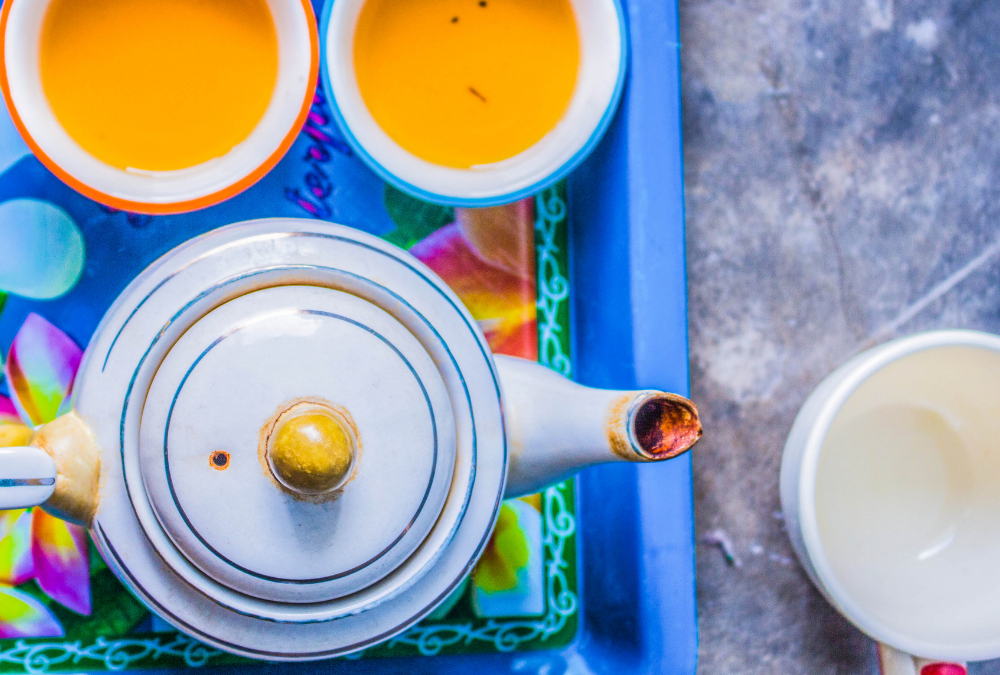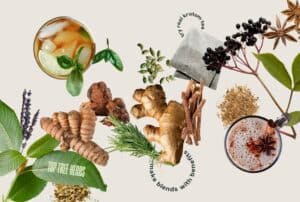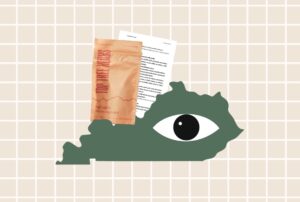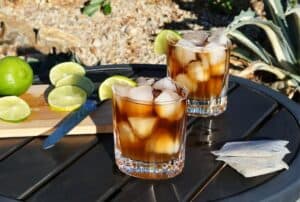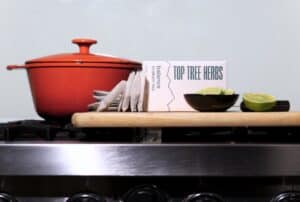Human history is steeped in natural herbal teas. Instances of natural herbal teas spot our oldest written historical documents, and probably predate the advent of written history. Teas – also known as tisanes, decoctions, or infusions – enjoy a special place in all cultures. Whether for enjoyment or survival, natural herbal teas will continue to be drunk for many years to come.
What are Natural Herbal Teas?
Broadly speaking, natural herbal teas cover a broad spectrum of hot water beverages. The most liberal definition of tea is a hot water and natural product mixture, usually strained so as not to contain plant particles. However, strictly speaking, “tea” refers to the beverage made by steeping the Camellia sinensis plant in hot water. This tea has been consumed in China since at least 2700 BCE.
Speaking about “herbal teas” is a way to imply that you’re talking about a plant other than C. sinensis. In this post, we’ll touch on the history of C. sinensis, by far the most famous tea leaf, as well as how other teas are broadly enjoyed throughout the world. We’ll cover the science of brewing tea, as well as how this simple, cozy, hot beverage has shaped human history.
And of course, we’ll discuss the caveat of “natural” herbal teas. We use the term natural to differentiate the herbal teas we’re discussing from beverages which have extracted parts of different plants. For example, Coca-Cola is a water beverage with flavor and nutrients from Erythroxylum coca and (formerly) isolated caffeine from coffee beans and tea leaves. Yet, it’s perhaps obvious that it is not a natural herbal tea.
Why Do We Have Natural Herbal Teas and Where Did They Come From?
Natural herbal teas have enjoyed a long reign as the beverage of choice throughout most of history. Many geopolitical regions the globe have their own unique cultures surrounding tea, and their practices often vary at the local level.
In Japan, serving tea is a mindfulness exercise dedicated to the aesthetics of the ceremony. In the Middle East, different teas customarily accompany different activities. And in the UK, a “tea break” serves to function as midday R&R for all.
Yet the basic reason herbal teas have a spot in so many different cultures is fairly simple. It all boils down to cleanliness.
Filters, refrigeration, and running water are all relatively new inventions in the grand scheme of things. Throughout most of human history, bacteria, pathogens, and viral infections have plagued our drinking water.
In much of Europe, as well as on ocean voyages, alcoholic beverages were the most commonly consumed beverages. The alcohol content ensured that anything dangerous was neutralized — it also ensured that most Europeans were considerably intoxicated.
This began to change as tea boomed through the mercenary mercantilism of the Dutch East India Company. Boiling water, rather than alcohol, started becoming the de facto sanitizing process. For an in depth analysis of how this change swept Europe, we recommend reading Tastes of Paradise by Wolfgang Schivelbusch.
Tisane vs. Decoction
Aside from the sweeping health benefits that come from boiled water, herbal teas are celebrated for numerous reasons. Most, if not all, traditional natural herbal teas present a number of health benefits. Yet most people find it difficult to consume (and digest) the herbs that provide these benefits.
Furthermore, some of these herbs (like sage, cinnamon, or kratom) are unpalatable when consumed in their raw form. Yet their tea counterparts are delicious!
When brewing these herbs into a tea, there are several ways to proceed. In technical terms, there are tisanes, decoctions, and infusions. A tisane involves pouring recently boiling water over the herb to gently steep. A decoction is boiling an herb and water mixture.
Usually decoctions are boiled for hours, while tisanes are steeped for five to thirty minutes. And finally, an infusion is a tisane made with warm or cold water. (To learn more about these processes, check out our earlier article here!)
Each herb requires a different brewing process. When the goal is to extract essential oils, tisanes are preferred. Attempting to decoct when you should steep can result in boiling off the desired essential oils, leaving you with nothing. And only steeping when you should boil may leave the plant molecules you want to consume in the plant. With natural herbal teas, one brewing process does not fit all.
Camellia sinensis Tea
Any discussion regarding natural herbal teas would be incomplete without the granddaddy of them all: Camellia sinensis. C. sinensis is a short, leafy bush. The bush originated in China or Assam. It has been consumed since at least 2700 BCE. Without a doubt, caffeine is the star of the show. Beyond caffeine, it has vitamins and amino acids.
C. sinensis is so popular as a hot water beverage that its colloquial name, te, has become a coverall term for all hot water beverages. Buddhists looking for energy during long meditation periods drank it. Taoists believed it to be a key ingredient in the elixir of immortality.
Today, C. sinensis tea is the most widely consumed beverage in the world. To make the tea, leaves are first picked from bushes that are at least 4-5 years old. The tea leaf is steamed, dried, or fermented. This processing affects what type of tea it is. There is green, black and semi-fermented (oolong) tea, although some connoisseurs recognize up to 330 varieties. (Voogelbreinder, Garden of Eden)
Chamomile Herbal Tea
Chamomile herbal tea has been enjoyed since the ancient Egyptians used it to anoint the body and worship Ra, the Sun God. In Medieval Europe, Chamomile was the scent of choice. Some planted whole lawns of it to perfume their walks. The Saxons considered it one of their nine sacred herbs. The Arabs and Indians have also employed it for therapeutic purposes since time immemorial.
Today, chamomile herbal tea is the king of sleepytime teas. The effect (and smell) of chamomile is primarily due to its essential oil content (limonene, sabinene, pinene). You use the tisane method to brew chamomile. Decocting it would evaporate the essential oils. Chamomile tea is very popular. You can find it alongside C. sinensis teas in grocery stores.
Kratom Tea
People started drinking kratom tea in Southeast Asia hundreds, if not thousands, of years ago. In Thailand, kratom tea is a regular beverage of laborers and farmers. Even though it does not contain caffeine, its use mimics that of caffeinated beverages in the west.
People drink it in the morning and at mid-afternoon as energy wains.. Opposite its uplifting effects, kratom tea, when drunk strong or in large quantities, can rival any sleepy time tea. In the United States and in Europe, kratom is just catching on.
Only now in its early years, most kratom consumers are unfamiliar with its long tradition of use. Instead of brewing a kratom decoction as traditionally done, most people have been swallowing the raw leaf powder. As you can expect, this has a reputation for its nasty taste and nauseating effect.
To brew kratom tea, you have several options. You can either decoct kratom tea bags in a pot of boiling water for two to three hours, or add lemon juice and decoct for just 30 minutes.
Its preparation as a tisane is more common and generally easier. Just add kratom tea bags, lemon juice, and boiling water to a thermos. Cap it for 20 minutes and let it steep.
The popularity of kratom tea is surging. In the west. We’re relearning about its uses and tradition. With its wide potential, kratom tea is starting to compete with medical marijuana. Like most natural herbal teas, kratom has a long safe history of use.
Natural Herbal Teas in Review
Prevailing wisdom points towards marrying your herbs with hot water. Teas, tisanes, and decoctions have kept humanity safe from bacteria and plagues for thousands of years. In retrospect, sliced bread was the best thing since hot water.
There are volumes of plants that have had a traditional use in teas. We simply could not try to cover them all in this article. Yet the three types we covered in this post – C. sinensis, chamomile, and kratom tea – stand out from the pack. All three have a massive following throughout the world.
Time to kick back and brew a natural herbal tea!
